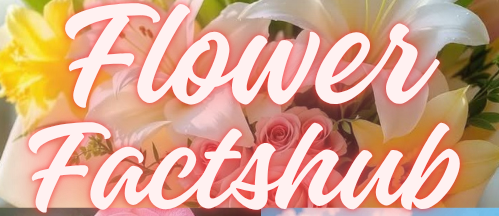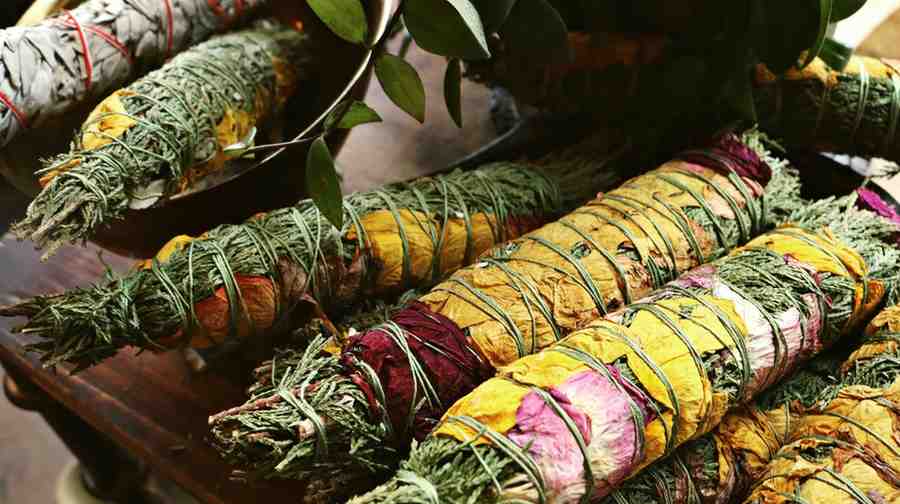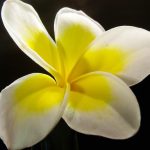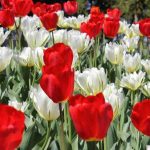If you’re a fan of all things rustic, natural, and long-lasting, then you’ve likely come across the enchanting allure of dried flowers. These flowers are more than just an aesthetic choice they’re a statement of timeless beauty, sustainability, and versatility. Whether you’re an avid DIY enthusiast, an eco-conscious decorator, or someone who simply enjoys a charming, rustic touch in your home, dried flower has a place in your life.
In this detailed guide, we’ll explore everything you need to know about dried flower: from what they are and how to dry them to creative ways of using them and maintaining their beauty for years to come. With practical tips, DIY projects, and the best care advice, you’ll soon discover why driedflower is making such a huge comeback in the world of home décor, crafts, and sustainable living.
Let’s dive right into the world of dried flower and explore their many possibilities.
What Are Dried Flowers?
Let’s start with the basics what are dried flowers exactly? Simply put, driedflowers are flowers that have been dehydrated to preserve their shape, color, and texture. Unlike fresh flowers that wither and die quickly, dried flower retain their beauty for months or even years.
People often associate driedflower with nostalgia and vintage aesthetics, but they have recently gained popularity as part of the sustainable living movement. Many embrace them for their long-lasting qualities, low maintenance, and versatility in décor and craft projects.
Why Choose Dried Flowers?
Longevity
One of the most appealing aspects of driedflowers is their longevity. While fresh flowers have a short lifespan of just a few days or a week at best, dried flowers last for months, and sometimes even years, with proper care. This means you can enjoy their beauty long after their fresh counterparts have wilted away.
Low Maintenance
These flowers require little to no care. Unlike living plants that need water, sunlight, and regular pruning, dried flower can be displayed in your home without worrying about maintenance. Simply place them in a vase, and they’ll keep their charm for years to come.
Sustainability
For eco-conscious individuals, driedflower offer a sustainable alternative to fresh flower. By opting for dried flowers, you reduce the waste associated with buying and discarding cut flower that perish quickly. Plus, many dried flowers can be reused, repurposed, or composted, making them a greener choice for décor and gifting.
Versatility
Dried flowers are incredibly versatile. They can be used for a variety of purposes whether you’re crafting, decorating your home, or even gifting them to someone special. From making DIY arrangements to enhancing special events like weddings, driedflowers fit perfectly into any setting.
History of Dried Flowers
The tradition of drying flowers dates back centuries. In ancient cultures, driedflowers were used not only for ornamental purposes but also for medicinal and ceremonial uses. The process of drying flowers was also a way to preserve them for later use, whether for natural remedies or decorative purposes.
In Victorian England, the practice of “flower pressing” became a popular hobby, and driedflowers were often incorporated into artwork, poetry, and pressed flower designs. This romantic practice has evolved into modern-day dried flower crafts and arrangements.
Throughout history, people have turned to dried flowers as a way of preserving beauty and nature. Today, they continue to be a timeless symbol of nature’s enduring beauty.
From ancient civilizations to modern-day craft movements, dried flowers have held significant cultural, medicinal, and decorative value. Below is a detailed exploration of the history of dried flowers, highlighting their various uses, meanings, and transformations throughout time.
Ancient Civilizations: Preservation and Symbolism
Ancient civilizations practiced drying flowers, using them for medicinal purposes, as part of religious rituals, and as symbols of love and memory.
- Ancient Egypt: The Egyptians were among the first to document the use of flowers for ornamental and symbolic purposes. They used flowers in elaborate burial rituals, as offerings to gods, and as symbols of life and death. The Egyptians also believed that flowers could aid in the afterlife, and many tombs were adorned with floral motifs. While they didn’t specifically dry flowers in the way we do today, they preserved petals and flowers through other methods, such as using them in the creation of sacred objects and personal amulets.
- Ancient Greece and Rome: In Greece and Rome, flowers held significant cultural and spiritual meaning. The ancient Greeks and Romans frequently used flowers in their art and daily lives. Flowers such as roses, violets, and laurel were used as wreaths for victories and important events. While the Greeks and Romans didn’t dry flowers specifically for long-term preservation, they did associate flowers with deeper symbolic meanings victory, love, beauty, and the transience of life. Some ancient writings suggest that flowers were pressed and dried, although not on a large scale.
- China and Japan: People highly revered flowers, not only for their beauty but also for their association with spiritual practices and seasonal celebrations. In China, people often used dried flowers in herbal medicine, while the Japanese practice of “Ikebana” (the art of flower arrangement) stems from a deep respect for the fleeting nature of life, which likely contributed to their appreciation of dried flower. In Japan, people also valued dried flower for crafting ceremonial garments, such as those worn by royalty and clergy.
The Victorian Era: Flower Pressing and Language of Flowers
During the Victorian era in the 19th century, the art of drying flowers truly began to flourish, particularly in Europe. This period saw the advent of flower pressing as a popular hobby, and flowers were dried and preserved in a variety of ways. This was also the period in which dried flowers became entwined with symbolic meanings through the popular practice of “floriography” (the language of flower).
- Flower Pressing: The Victorians loved to preserve flowers as a way to memorialize moments in time. People practiced flower pressing by placing flowers between sheets of paper and pressing them under heavy objects like books. Once pressed, they often framed the flowers and displayed them as keepsakes, arranging them into decorative pieces such as bookmarks, wall art, and souvenirs. Flower pressing became a popular pastime, and it was during this period that the modern-day concept of preserving flowers in this manner became widespread.
- Floriography (Language of Flowers): During the Victorian era, people embraced the height of “floriography” by assigning meanings to different flowers and using them to communicate emotions and intentions. They often gave dried flowers in floral arrangements and bouquets as gifts to convey specific messages, since fresh flower withered too quickly. For example, someone might offer a dried rose to signify everlasting love or choose lavender to express devotion or purity. The popularity of gifting dried flowers with hidden meanings grew so much that authors began writing books to teach the “language” of flower, and people turned dried flower arrangements into an important form of communication.
The 20th Century: Dried Flowers in Home Decor and Crafts
The 20th century saw dried flowers become a popular element in home décor, particularly during the early and mid-1900s. As floral preservation techniques improved, dried flowers became accessible for personal use, especially in the context of the craft and decorative movements.
- Craft Movements: In the early 20th century, the arts and crafts movement embraced dried flowers, especially in the creation of hand-made items like wreaths, garlands, and bouquets. Florists and crafters alike began experimenting with dried flowers and frequently incorporated them into Victorian-inspired and rustic home décor. They used wreaths made of dried flowers, such as lavender, roses, and daisies, to adorn doors and walls, creating a nostalgic, romantic ambiance.
- The 1970s and Bohemian Aesthetics: The 1970s brought the rise of the bohemian style, where dried flowers gained popularity as part of a free-spirited, nature-loving aesthetic. Dried flowers were often used to decorate homes, especially in country-style homes or in cottages, where their rustic charm fit the naturalistic design ethos. Dried flower arrangements became symbolic of a simpler, nature-focused lifestyle, as they were long-lasting and required little maintenance.
- Advancements in Drying Techniques: Throughout the 20th century, new techniques for drying flowers were developed. Some of the most popular methods included air drying, pressing, and using silica gel to preserve the color and shape of flowers. The invention of more effective drying tools and materials allowed people to create more intricate and durable dried flower arrangements. The availability of these techniques helped dried flowers maintain their popularity for both personal use and professional arrangements.
Modern-Day Popularity: Sustainability and Eco-Friendly Practices
In recent years, dried flowers have made a huge comeback, especially as people seek more sustainable and eco-friendly alternatives to fresh flowers. With a growing focus on sustainability, environmental consciousness, and zero-waste living, dried flowers are now more popular than ever for a variety of reasons.
- Sustainability and Longevity: One of the main reasons dried flowers have surged in popularity is their sustainability. Unlike fresh flowers, which wither and die quickly, dried flower can last for months or even years with proper care. This makes them an eco-friendly option for décor, reducing waste and the need for constant replacements. Additionally, many people now prefer locally grown, seasonal flowers, which they can dry and preserve at home, further reducing the carbon footprint associated with the floral industry.
- Dried Flowers in Modern Décor: Today, dried flowers are a popular choice for home décor, especially in minimalistic and bohemian interior design styles. They add texture, color, and a rustic charm to any room. People often display dried flower arrangements, wreaths, and bouquets in vases, frames, or as hanging installations. Floral designers have embraced the versatility of dried flower, using them in modern wedding bouquets, installations, and event décor, often paired with fresh blooms for a balanced, long-lasting effect.
- Floral Preservation for Crafts: The craft world has also embraced dried flower, using them in various DIY projects, such as pressed flower art, scrapbooking, greeting cards, and even jewelry making. Thanks to the rise of online crafting communities, there’s been a renewed interest in creating personalized, handcrafted items with dried flowers. People are also experimenting with new preservation techniques, such as resin and eco-friendly drying methods.
Different Methods for Drying Flowers
There are various methods to dry flowers, each with its own advantages. Whether you’re new to flower preservation or looking for the best technique, here are some of the most popular methods:
Air Drying
Air drying is one of the simplest and most natural ways to dry flowers. The process involves hanging flowers upside down to dry in a cool, dark, and dry location. Here’s how to do it:
- Choose the Right Flowers: Best for hardy flowers like lavender, strawflower, and baby’s breath.
- Prepare the Stems: Tie the flower stems together with twine or rubber bands, ensuring they are tightly secured.
- Hang Upside Down: Hang the bundle in a well-ventilated area, avoiding places with high humidity.
- Wait for Two to Three Weeks: After about two to three weeks, the flowers will be completely dried.
Pressing Flowers
If you want a more artistic or flat dried flower, pressing is the way to go. This method involves placing flowers between sheets of paper and applying pressure to flatten them. Here’s how:
- Pick the Right Flowers: Flowers with thin petals like pansies or violets work best.
- Place Between Parchment Paper: Sandwich the flowers between sheets of parchment paper and place them inside a heavy book.
- Wait for 1-2 Weeks: After a week or two, your flowers will be dry and flat, ready to use in cards, artwork, or decorations.
Using a Dehydrator
For faster drying, you can use a dehydrator, which speeds up the process by removing moisture from the flowers using heat. This method is great for delicate flowers like roses or peonies.
- Set to Low Heat: Place the flowers on the dehydrator trays and use the lowest heat setting to preserve the flowers’ color.
- Monitor: Check them regularly to ensure they don’t over-dry.
Silica Gel Drying
Silica gel is a desiccant that draws moisture out of flowers quickly, preserving both their shape and color. It’s ideal for delicate flowers like lilies or orchids.
- Cover with Silica Gel: Gently bury the flowers in silica gel inside a container.
- Let It Dry: Wait for a few days until the flowers are fully dried, then remove them and brush off the excess gel.
Best Flowers for Drying
Not all flowers are suitable for drying, so it’s essential to choose flowers that hold up well during the process. Here are some of the best flowers for drying:
- Lavender: Known for its calming scent, lavender is an excellent flower for air drying.
- Roses: Dried roses retain their shape and beauty, making them perfect for long-lasting arrangements.
- Eucalyptus: Often used in wreaths and bouquets, eucalyptus adds texture and fragrance to dried floral arrangements.
- Baby’s Breath: With its delicate, airy petals, baby’s breath is ideal for dried flower bouquets and wreaths.
- Sunflowers: Their large, bold petals make sunflowers an attention-grabbing addition to dried flower arrangements.
How to Make Dried Flower Bouquets
Creating your own dried flower bouquet is easier than you might think. Here’s a step-by-step guide to help you make a beautiful dried flower arrangement:
Choose Your Flowers
Pick flowers that complement each other in color, size, and texture. Consider mixing flowers like lavender, eucalyptus, and roses for a well-balanced bouquet.
Arrange the Stems
Arrange the flower stems in a circular pattern, starting with the largest flowers in the center and adding smaller blooms around them. Keep the stems as even as possible to ensure a neat bouquet.
Secure the Stems
Once you’re happy with your arrangement, tie the stems together with twine, ribbon, or floral wire. Make sure the stems are tightly bound to prevent them from shifting.
Display
Place your bouquet in a vase, jar, or any decorative container that suits your style. Dried flower bouquets can last for months, so they’re perfect for display in any room.
Using Dried Flowers in Home Décor
Dried flowers are a wonderful way to add charm and personality to your home. Here are some creative ideas to incorporate dried flowers into your décor:
Wreaths
A dried flower wreath is an elegant way to bring the beauty of nature into your home. Use seasonal flowers for a fresh, vibrant wreath or opt for neutral-colored flowers for a more rustic, bohemian look.
Centerpieces and Vases
Place dried flowers in a vase for a minimalist yet striking centerpiece. They add a touch of nature to dining tables, side tables, and coffee tables. Experiment with different flower types and vase styles to find what best suits your décor.
Floral Arrangements
Dried flower arrangements are a great way to fill empty spaces. You can arrange them in rustic jars, antique vases, or elegant urns, depending on your style.
Hanging Bouquets
For a unique and artistic display, hang dried flower bouquets from the ceiling. This is an especially beautiful option for weddings, events, or just adding an unexpected touch to your home.
DIY Dried Flower Projects
Dried flowers are perfect for DIY projects. Here are a few fun ideas to try:
Creating Handmade Cards
Add dried flowers to handmade cards for a personalized and unique touch. Simply press flowers and glue them to the front of your card.
Making Potpourri
Dried flowers, combined with fragrant herbs and spices, make a delightful potpourri blend. Use lavender, rose petals, and cinnamon sticks to create a soothing scent for your home.
Pressed Flower Art
Create beautiful pressed flower art by arranging dried flowers on canvas or in frames. Pressed flowers can be used in scrapbooking or as wall décor.
Caring for Your Dried Flowers
To ensure that your dried flowers stay beautiful for as long as possible, follow these care tips:
Storing Dried Flowers
Keep dried flowers in a cool, dry place, away from direct sunlight. Store them in airtight containers to prevent dust and moisture from damaging them.
Keeping Them Dust-Free
Regularly dust your dried flowers with a soft brush or a can of compressed air to keep them looking fresh.
Avoiding Sunlight and Moisture
Sunlight can cause dried flowers to fade over time, while moisture can cause them to rot. Keep them in a dry, shaded area to maintain their beauty.
Sustainable Benefits of Dried Flowers
Dried flowers are an excellent choice for those interested in reducing their environmental impact. By choosing dried flowers over fresh ones, you contribute to a more sustainable lifestyle. They last longer, reducing the need for constant replacements, and they can be composted or repurposed for other projects once they’re no longer needed.
Dried Flowers in Weddings and Special Events
Dried flowers have become a favorite for weddings and special events. Their rustic, bohemian appeal makes them perfect for creating stunning bridal bouquets, floral crowns, and wedding décor. From centerpieces to table runners, dried flowers bring a unique, earthy charm to any occasion.
Final Thoughts
Dried flowers have transcended centuries of cultural, practical, and artistic value. From ancient Egyptian tombs to Victorian flower pressing, to modern sustainable décor and crafting, dried flowers have consistently been used to capture fleeting moments of beauty and preserve them for future generations. In recent times, the focus has shifted to sustainability, with dried flowers becoming an eco-friendly and long-lasting alternative to fresh blooms.
Dried flowers are a wonderful way to incorporate nature into your home, your crafts, and your life. With their long-lasting beauty, low-maintenance needs, and sustainability, they provide endless opportunities for creative expression. Whether you’re drying flowers from your own garden, creating a DIY arrangement, or adding them to your wedding décor, dried flowers remain a timeless, eco-friendly choice. Not only are they sustainable, but they also offer lasting beauty, making them perfect for a wide range of occasions.
Now that you know the ins and outs of dried flowers from drying techniques to care tips and DIY ideas it’s time to start enjoying their beauty in your life. Get creative, experiment with different flower combinations, and bring the charm of dried flowers into your home today!
Frequently Asked Questions (FAQs)
What are the best flowers for drying?
Flowers like roses, lavender, baby’s breath, statice, hydrangeas, and strawflowers are ideal for drying because they retain color and shape well.
Q2: How do I dry flowers at home?
You can dry flowers using methods like air drying, pressing, silica gel drying, or using a microwave for quick results.
Q3: How long do dried flowers last?
With proper care, dried flowers can last 6 months to a year or more, depending on the flower type and storage conditions.
Q4: Do dried flowers need water?
No, dried flowers should never be watered doing so can cause mold and deterioration.
Q5: Can I spray anything on dried flowers to preserve them?
Yes, spraying dried flowers with hairspray or floral sealant helps prevent breakage and fading.



